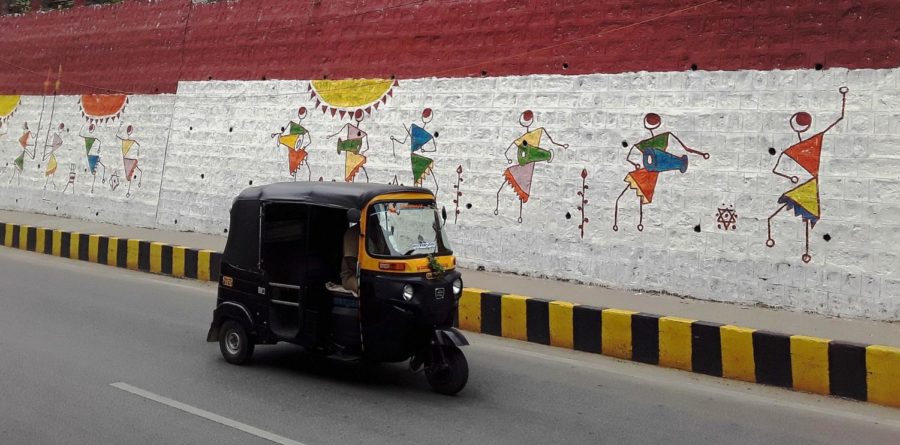Shiralkar: The hidden art of Warli paintings
Columnist Parth Shiralkar speaks about the art of Warli paintings coming from the Warli tribe in Maharashtra, India.
February 15, 2020
It was a wildly mediocre day with extremely normal weather when I came across a tiny trinket in a thrift shop a few days ago. Why it caught my attention can be explained in a few words: I have never seen a Warli design outside of India, ever. Something not being sold in bulk on Etsy, that is.
The Warli are a tribe in Maharashtra, India. Maharashtra happens to be my home state and my parents have sparked in me an interest for the art of the Warli since I was a child. An indigenous tribe, they were one of the earliest people to occupy quite a few coastal and mountainous regions of Maharashtra.
A hugely peaceful tribe, they are known to speak Marathi (which is my mother tongue) with some geographical influence of the Gujarat borders (a neighboring state). The official language is called Varli. This is a largely unwritten language and thus there is very little documentation that is native to the Warli.
The religious beliefs of the Warli tribe are spiritual, almost animistic. They believe that everything — from geographical locations to seemingly inanimate objects and obviously creatures — hold some spiritual essence. This makes their outlook towards nature extremely reverential. I have never been to an actual Warli settlement. Then again, they are a peaceful people and do not appreciate rampant tourism.
The art of the Warli is perfectly simple: the main elements of this art are a circle, a triangle and a square. It is by default the intellectual property of the Warli tribe and sometimes art exhibits are used to route funds for the settlements.
Some of the oldest Warli paintings have been found to be a few thousand years old. Made from materials ranging from mud, branches and cow dung (a revered animal in the culture), the paintings depict scenes from the daily life of the tribe. People farming, dancing, just chilling are all scenes commonly seen in the art.
These paintings have a reddish background with white characters and elements in the foreground, which are painted using a mixture of rice paste and gum. I looked up what they use for brushes and apparently bamboo sticks with their ends chewed get the job done.
As is the case with many cultures on the brink of dropping away from the horizon, the Warli have had considerable success staying relevant with the help of Western hype. This is not necessarily a bad thing but it speaks volumes about the state of affairs as they are. Conservation attempts are being made back home in India and the undertaking is gaining momentum.
Warli paintings tell stories with lessons hidden within them. The intricacies of the paintings tell you that it’s okay to have complex issues in your daily lives but it is also the very nature of things to be complex. A moment of peace here, a sip of water there, a few hours of gaming with the pals, you name it: you can and will find peace in doing what you love.

















